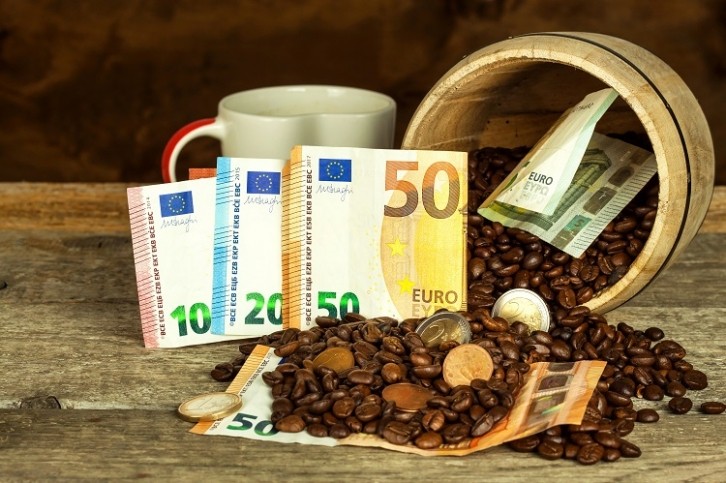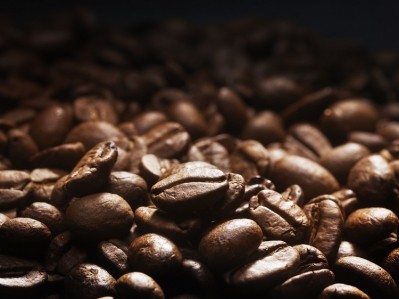Will coffee prices ever come down?

Coffee prices have been on the rise for quite some time. For nearly a year, the general trend has been upwards, reaching a 13-year peak on 28 August this year, according to Trading Economics.
A recent cold snap in Brazil, one of the world’s leading producers of coffee, has brought the situation into focus. Indeed, extreme weather events, both hot and cold, can impact yields, largely due to the ever-present climate change.
Now, we ask several analysts when – or if - they think these prices might fall.
When will coffee prices fall?
Weather patterns in Brazil are central to coffee prices. The country accounts for 40% of world production, according to Steve Wateridge, head of research at tropical research services at market intelligence firm Expana.
Whether coffee prices go up or down, he told FoodNavigator, hinges largely on the crop potential for Brazil’s upcoming 2025/26 season. When the rains return, coffee crops begin to flower, and from this, growers will be better able to predict what the crop potential is for the season.
Good weather could mean that prices would begin to fall. On the other hand, underperforming weather, for the fifth year in a row, would likely mean that coffee prices won’t fall. In fact, a poor Brazil crop could mean even further price rises.
However, the recent cold snap, according to Wateridge, was not significant for prices, as “the damage was minimal.” Indeed, dry weather is far more significant than frost when it comes to coffee yields, he told us.
While arabica faces significant pressure, robusta, which is mainly grown in Vietnam, faces fewer challenges.

While a rise of robusta prices has been seen due to south Asia’s hot and dry conditions, these prices could fall in the future, suggested Stephen Butler, co-founder of commodities data company ChAI.
In Vietnam, the rainy season starts in April and May, Expana’s Wateridge told us. While we’ve now passed this threshold, “there are still differences of opinion on how good or bad the crop is. Ultimately, we find out after the harvest by how much coffee comes out, but we don't think that Vietnam is as much of a problem as potentially Brazil is.”
Will coffee prices ever return to pre-2024 levels?
Coffee prices could, in theory, return to the levels they were before 2024, ChAI’s Butler told us. But this could take a very long time.
“It will need at least two consecutive years of improving crop growth and will need friendlier weather to get the market back to more stable levels,” he told us.
If such weather patterns continue, coffee producers may need to adapt. This, Butler told us, may mean diversifying between different regions.
“Unlike cocoa, where west Africa produces the lion's share of global cocoa stocks, coffee production could become more regionally diversified in the coming years. It is a strong possibility that coffee supplies could bounce back to a steady surplus between now and 2030.”
For Expana’s Wateridge, weather is a key factor. “If in a month's time we see plenty of rain in Brazil returning on time, then I think we could see prices back to the sort of levels we saw a year ago pretty quickly.”
However, weather is unpredictable, he stressed, especially in the long-term. Prices could just as easily go up.
If prices remain high, he predicts, it is the consumers who will adapt. They have already been seen to be adapting to currently high prices.
Robusta and arabica
The two main types of coffee are arabica and robusta. Arabica is considered higher quality, but must also be grown at higher altitudes, meaning that it needs more specific growing conditions. Robusta is hardier, and can be grown at lower altitudes, but considered less high quality.
Arabica growing is dominated by Latin America, with Brazil and Colombia the key players. Robusta is more prominently grown in southeast Asia, with Vietnam and Indonesia growing a significant portion.
According to Expana’s Wateridge, robusta can sometimes work as a substitute for arabica when the latter’s price becomes too high for manufacturers to stomach.
Will the EUDR exacerbate price rises?
The upcoming European Union Deforestation Regulation (EUDR) is due to come into force on 30 December this year. Coffee is one of the commodities it covers.
By adding traceability requirements to belaboured producers, the EUDR has the potential to push up prices. But will it?
ChAI’s Butler doesn’t think so. Coffee that isn’t EUDR-compliant, he predicts, will be snapped up by emerging markets, particularly China, where demand for coffee (and chocolate) is increasing.
“It's most likely the small coffee holdings and smaller importing operations will be negatively impacted to begin with,” he told us.
Expana’s Wateridge, on the other hand, suggested that if the EUDR does go ahead in its current form, and he predicts it won’t, prices will increase. “I don't think there's enough EUDR compliant coffee in the world to meet European demand, and therefore the function of price, once again, will be to ration demand.”
Putting up prices, he suggested, kills demand. If the demand is for 100 units but there is only 80 units of EUDR-compliant coffee available, putting up the price may dissuade 20% of consumers from buying.
How does El Niño affect coffee growers?
The El Niño oscillation is a change in ocean weather patterns that can affect global weather. In normal conditions, trade winds push warm water from east to west. The areas where warm water is on the surface often have more cloud and rainfall.
During El Niño, trade winds weaken, meaning that warm water is pushed back eastward, towards the west coast of the Americas. The wider area of warm water causes associated unstable weather patterns to shift, altering wind patterns. This affects weather around the world, changing the likelihood of floods, drought, cold seasons and heatwaves. Energy from El Niño can also push up global temperatures.
El Niño has the potential to affect coffee yields in places such as Brazil when it causes weather patterns to change.




























